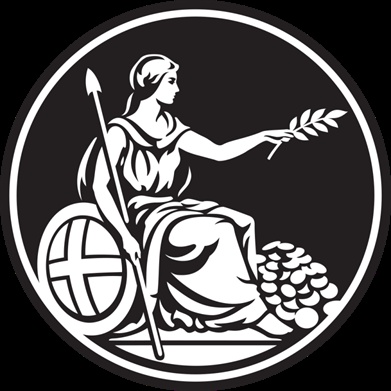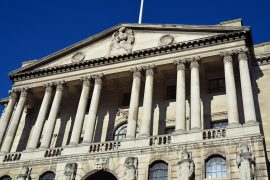Bank of England apologises for role of former governors linked to slave trade
The Bank of England (BoE) has apologises for the involvement of some of its past governors and directors in the slave trade, according to The Guardian.
The central bank also pledges to remove all statues and paintings of them from public display in its Threadneedle Street headquarters.
“As an institution, the Bank of England was never itself directly involved in the slave trade, but is aware of some inexcusable connections involving former governors and directors and apologises for them,” a spokesperson for the Bank says.

At least 11 former Bank governors and 16 early directors either benefitted from those payments or had links to the slave trade.
“The Bank has commenced a thorough review of its collection of images of former governors and directors to ensure none with any such involvement in the slave trade remains on display anywhere in the Bank,” the spokesperson adds.
University College London (UCL) database shows that at least 11 former Bank governors and 16 early directors either benefitted from those payments or had links to the slave trade.
Related: Fintech’s diversity performance last year and predictions for 2020
Trevor Burnard, director at The Wilberforce Institute in the University of Hull, highlights one particular slave trader and governor at the BoE, in a letter sent to The Guardian. Burnard draws attention to “the Bank’s most important slave-trading member, Sir Humphry Morice.”
“He was a director of the Bank of England from 1716, and governor in the 1720s. He was also a leading slave trader, whose papers at the Bank I surveyed on the remarkable day of 11 September 2001,” Burnard writes.
“Morice was responsible for shipping over 25,000 Africans to the Caribbean. One thing the Bank could do to make its apology real rather than token would be to pay for the extensive papers on Morice’s slave-trading involvement to be published, and for the details to be highlighted in the Bank as a reminder of the murky origins of some of its most important early founders.”
Barclays & Lloyd’s of London
While the history of Europe’s scramble for African slaves has been widely known for centuries, the death of George Floyd in the United States has prompted a sweeping global reassessment of racism and the financing of the slave trade.
The Lloyd’s of London insurance market apologised on 18 June for its “shameful” role in the 18th Century Atlantic slave trade and pledged to fund opportunities for black and ethnic minority people, as reported on Reuters.
But a regional alliance of Caribbean countries said that Britain’s institutions should go much further than simply apologising and give some of the wealth back to the Caribbean by funding development at the epicentre of the slave trade.
Read more: Being black in the financial services industry
“It is not enough to say sorry,” says Hilary Beckles, chairman of the CARICOM Reparations Commission which was set up by Caribbean countries to seek reparations from former colonial powers such as the United Kingdom, France and Portugal.
“We are not asking for anything as mendicant as handing out cheques to people on street corners,” Beckles tells Reuters from Jamaica. “The issue of money is secondary, but in this instance the moral discharge of one’s duty does require in a market economy that you contribute towards development.”
Beckles, a Barbadian historian, said the antecedents of many British and European banks, as well as an array of accompanying institutions in the City of London, “drank from the well of Caribbean slavery”.
The UCL study also shows how provincial banking emerged in the 18th century because of the need for credit in the long-distance Atlantic slave trade. For example, Liverpool merchants involved in slave trading later formed Heywoods Bank, which eventually became part of Barclays Bank.
Other modern banking names, such as Lloyds Bank, emerged in this way and inevitably had links to the Atlantic slave trade.
BoE slave trade involvement
Although the BoE denies any direct involvement in the slave trade, BBC History highlights its involvement in the transatlantic slave trade. When it was set up in 1694, the BoE underpinned the whole system of commercial credit, and its wealthy City members, from the governor down, were often men whose fortunes had been made wholly or partly in the slave trade.
The Bank of England stabilised the national finances, and enabled the state to wage its major wars of the 18th century. These wars were aimed at securing and safeguarding overseas possessions, including the slave colonies, and to finance the military and naval means that protected the Atlantic slave routes and the plantation economies.
The remnants of the transatlantic slave-trade and its intermingling with the financial industry is seen as recently as 2015. Before the British government had passed the Slavery Abolition Act in 1833, which outlawed slavery in most parts of the empire, two of Europe’s most famous bankers came to an agreement with the chancellor of the exchequer.
See also: Former FCA exec says banking tech could lead to discrimination

The remnants of the transatlantic slave-trade and its intermingling with the financial industry is seen as recently as 2015.
The meeting regarded taking out one of the largest loans in history, to finance the slave compensation package required by the 1833 Act. Nathan Mayer Rothschild and his brother-in-law Moses Montefiore agreed to loan the British government £15 million, with the government adding an additional £5 million later. The total sum represented 40% of the government’s yearly income in those days, equivalent to some £300 billion today.
British taxpayers have been paying off the loan since then, and the payments only ended in 2015. Generations of Britons have been implicated in a legacy of financial support for one of the world’s most egregious crimes against humanity.
The revelation came on 9 February 2018, in the form of a tweet by HM Treasury: “Here’s today’s surprising #FridayFact. Millions of you have helped end the slave trade through your taxes. Did you know? In 1833, Britain used £20 million, 40% of its national budget, to buy freedom for all slaves in the Empire. The amount of money borrowed for the Slavery Abolition Act was so large that it wasn’t paid off until 2015. Which means that living British citizens helped pay to end the slave trade.”
The “slave compensation” did not go towards freed slaves to redress the injustices they suffered. Instead, the money went exclusively to the owners of slaves, who were being compensated for the loss of what had, until then, been considered their property.











































